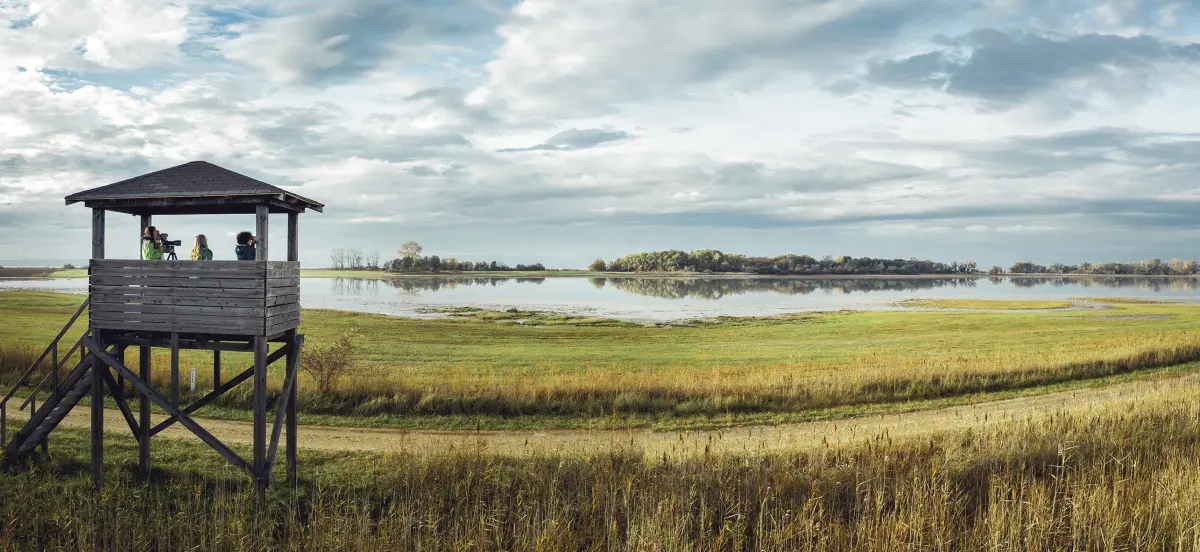My two friends look over at me, slightly puzzled. You can read the question on their faces why I suddenly stop at the side of the road between two villages and ask them to come along. With the promise not to expect them to walk any longer in the summer heat, we set off on the short path along the vines on the northern shore of Lake Neusiedl. Soon accompanied by the calls of acrobatic birds darting overhead, alternating between rapid wing beats and gliding flight reminiscent of large swallows. We quickly reach a small observation hut on the Ungerberg and, without exchanging words, look up at a steep, sandy-loamy loess wall to watch spellbound the hustle and bustle of colourful, iridescent birds in front of their breeding chambers. The binoculars are constantly circling between our hands, so little can any of us get enough of the fascinating bee-eaters, which with their colourful plumage could easily be mistaken for tropical birds.
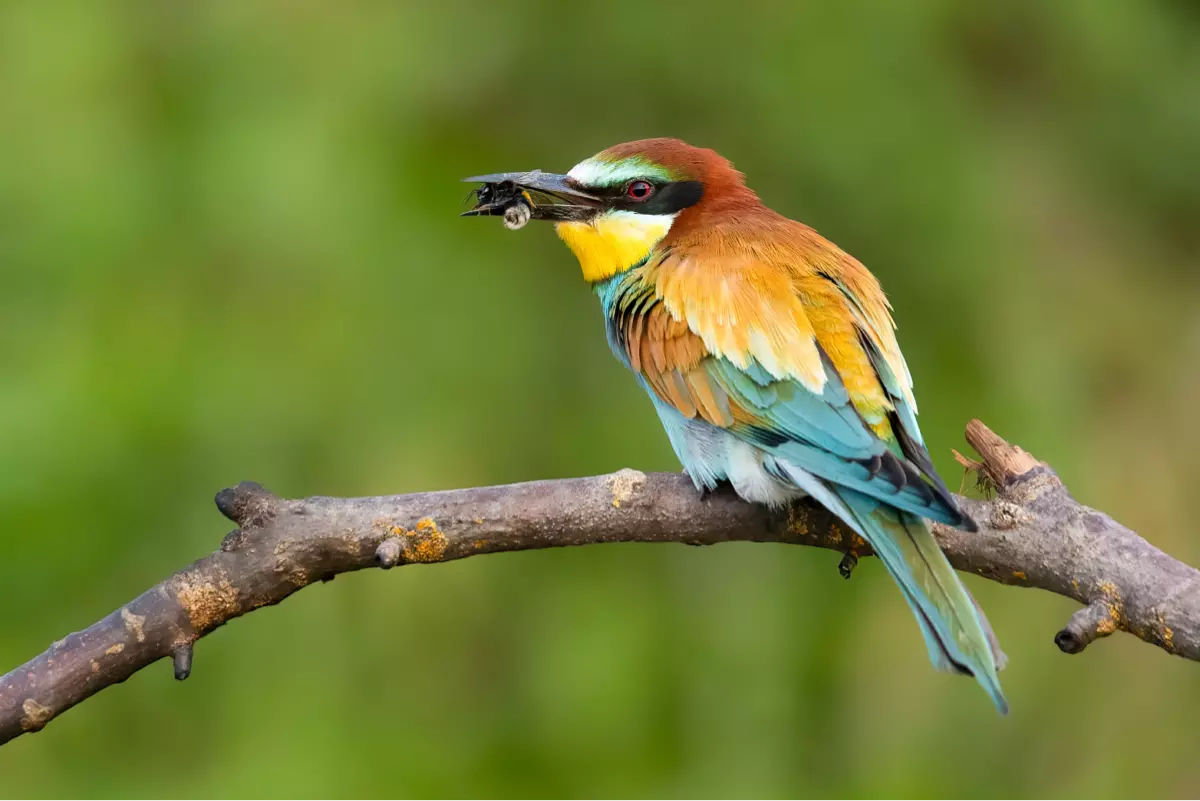
I think back to this special experience often and with pleasure, especially because I was able to share the enthusiasm with my companions. Today one would perhaps say we had undertaken a spontaneous birding trip.
Birdwatching is the trend
For a long time, observing, identifying and photographing birds and subsequently documenting the experience remained limited to a manageable group of amateur birdwatchers and ornithologists. The reasons why people are interested in birdlife are manifold. Sometimes it is a key experience, for example when a feathered visitor appears at the feeder that looks special or different from the familiar sparrows or finches and thus arouses the curiosity of its observers. If they then buy an identification book to learn more, the next step is often to take a closer look at the subject.
But why are more and more laymen interested in bird watching? In the age of the Internet, the thirst for knowledge can be satisfied more quickly than through books, and when surfing on corresponding "Orni" sites, some may then come across lists in which they can enter their observations, or social media groups of like-minded amateurs and experts. There, it is possible to show photos or describe observations in order to get clues about a certain species. This is a low-threshold way of exchanging information with others without the fear of being ridiculed by experts if you post a picture of a common great tit, for example. Other technical innovations are also responsible for the growing interest in bird watching. On the one hand, there is the range of increasingly powerful optical devices such as digital cameras, lenses and binoculars, on the other hand, apps for bird call recognition offer good, if not always perfect, assistance in species identification. The two annual campaigns "Stunde der Wintervögel" (Winter Bird Hour) and "Stunde der Gartenvögel" (Garden Bird Hour) by NABU (Naturschutzbund Deutschland) and LBV (Landesbund für Vogelschutz in Bayern), which are promoted by the media and ask the public to report their observations, also enliven the topic of birding.
In particular, the progressive loss of habitats and the chemicalisation of intensive agriculture are contributing to a dramatic decline in the populations of even formerly common species. More and more bird species are now considered endangered and are on the Red List. And it is precisely these rarities that motivate many "birder", the attraction of the special fires up a real passion for collecting, unfortunately not always characterised by consideration for the animals.
The other side of the coin
Birding is great fun, especially as a community experience and in exchange with like-minded people; it counteracts the alienation of humans from nature. Birdwatching can also create the basis for the "infected" to get involved in species conservation. This is in line with the environmental education guiding principle "Only what you know and appreciate will you protect".
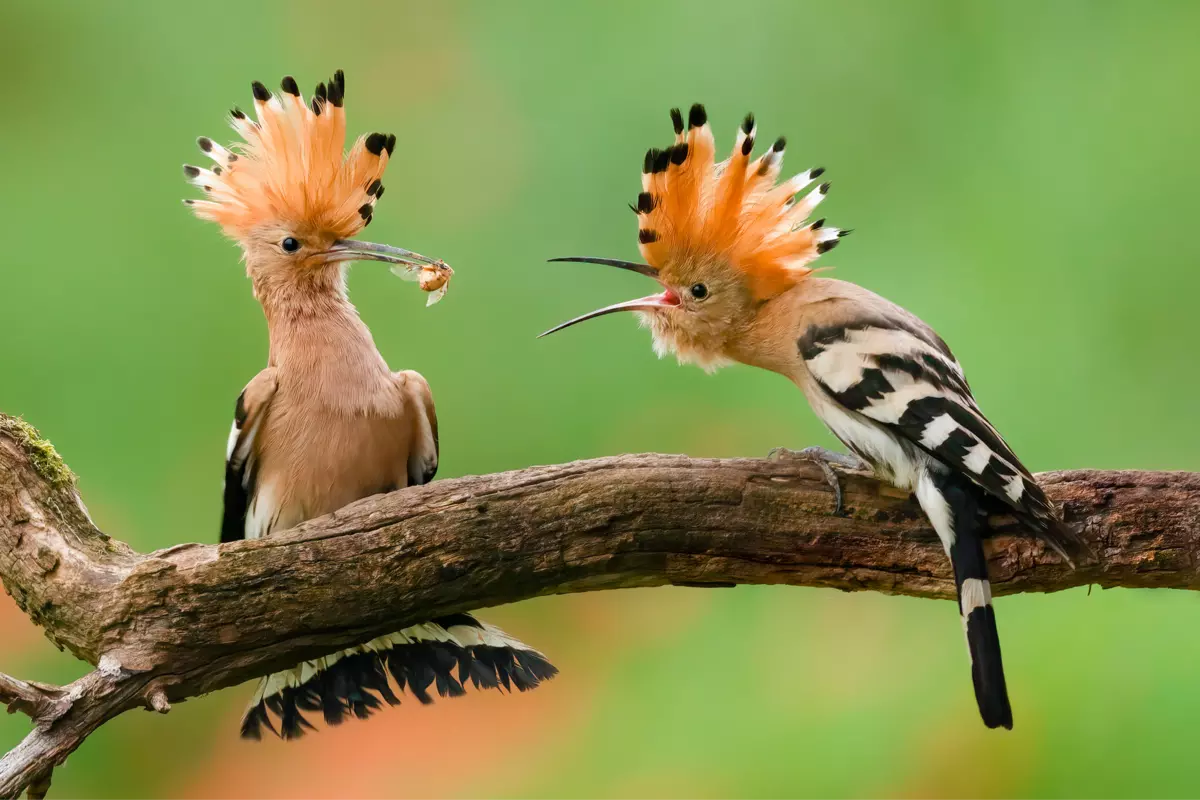
Nevertheless, experts like Manfred Siering, chairman of the Bavarian Ornithological Society, observe the latest developments with mixed feelings. His critical judgement relates less to extreme passions such as "speedbirding", in which as many species as possible are documented in a short time in order to set personal records or outdo competitors. It is rather the general development that worries him - the problem of increasing disturbances of nature, especially by nature seekers. More and more rangers and protected area managers report a loss of respect for the supervisory bodies and a refusal to abide by rules and regulations. There are increasing reports of dog owners ignoring measures to protect meadow habitats, of gravel banks being blocked by bathers and boaters, and of mountain bikers racing through riparian forests. But it is not only the increasing recreational pressure on the habitats that aggravates the problem, but also intransigent and inconsiderate "birder". Siering says that some amateur photographers have stocked up on high-quality cameras, especially during the pandemic phase, and are now recklessly trying to get especially spectacular and rare species in front of their lenses. It is not uncommon for them to cause disturbances that repeatedly lead to the abandonment of broods. A kind of trophy addiction seems to have spread in some circles, where the actual interest in the objects of desire and their welfare is not the top priority.
Respect the rules!
As our "historical" example above with the bee-eaters proves, it is a delightful experience to be able to observe or photograph a rare species in particular through binoculars. However, it is always important to keep a sufficient distance and avoid talking loudly. It is not only in protected areas that it is a top priority to stay on the paths or to take aim at the birds from special observation stands.
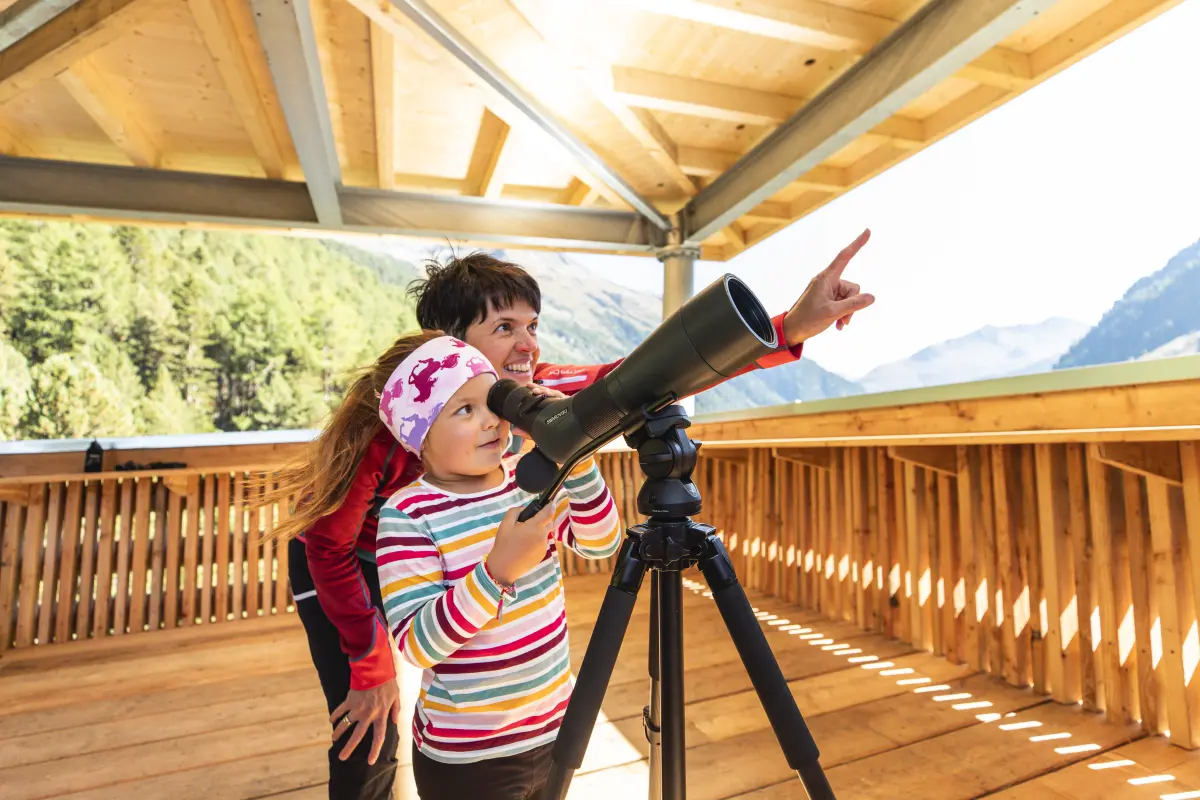
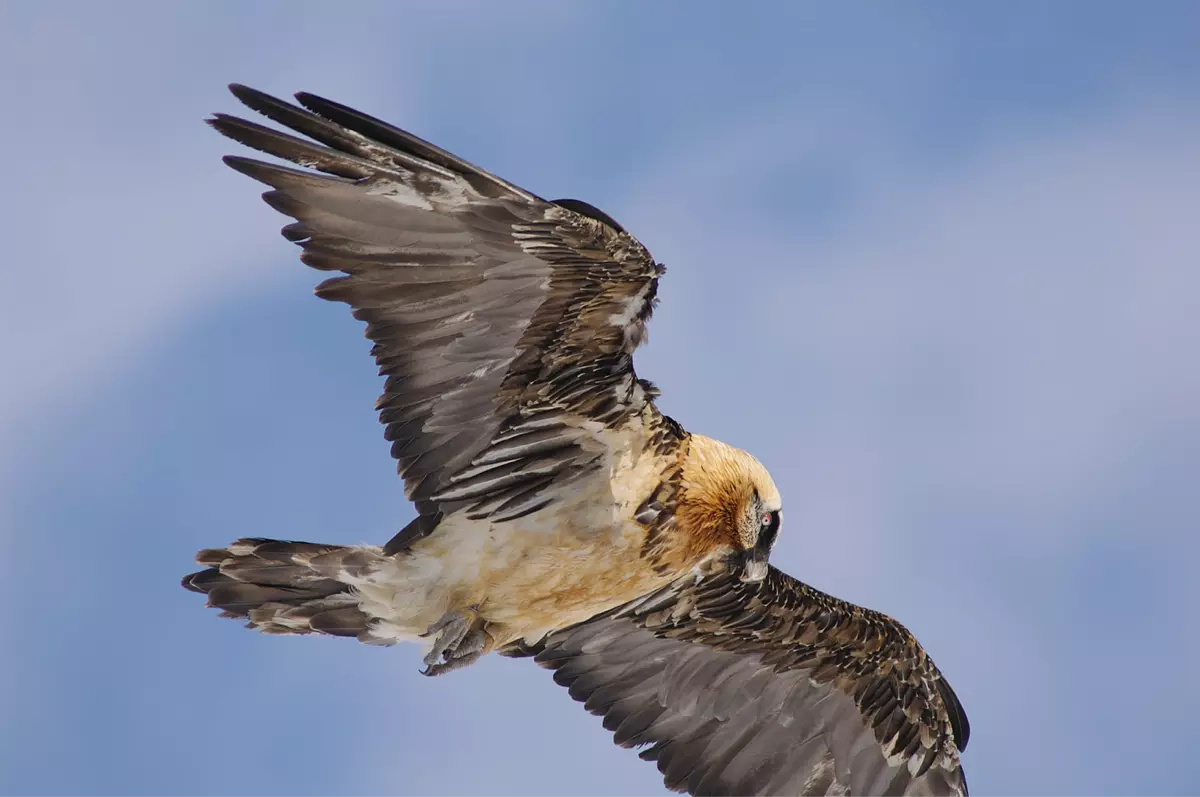
Here, too, no hectic movements or the wearing of colourful clothing are allowed. Under no circumstances should animals be fed, and when taking photographs it is important to minimise glare.
Respect for our fellow creatures, the joy of birdwatching, should always be in the foreground; photographic trophy-seeking and competitive behaviour, on the other hand, should not become the leitmotif.
From bird song walks to guided tours and excursions, birding and nature conservation associations, area wardens and rangers provide great birding experiences. The advantage of such offers: The guides know the best observation sites and also provide important information about individual species and their habitats.
Selected Birding Hotspots
Even those who prefer to go stalking on their own will find great motifs at official observation points in nature reserves or national parks. Here are a few examples:
The area of today's Austro-Hungarian Lake Neusiedl/Seewinkel National Park has always been a centre of attraction for ornithologists and amateur birdwatchers from all over the world. The broad reed belts of the steppe lake are refuges for rare species such as the bearded tit or the spoonbill, while the diverse landscape of the Zitzmannsdorf meadows on the eastern shore with its mosaic of fens, salt marshes, wet meadows and semi-arid grasslands provide ideal habitats for black-tailed godwits, bluethroats, barred warblers, short-eared owls and harriers, for example. And they are the preferred hunting ground of "our" bee-eaters because they are rich in insects. Redshanks, shelducks, avocets and black-winged stilts can be observed at the 40 or so small and larger saline lakes, called "Lacken", which are unfortunately increasingly drying up due to longer and longer dry periods.
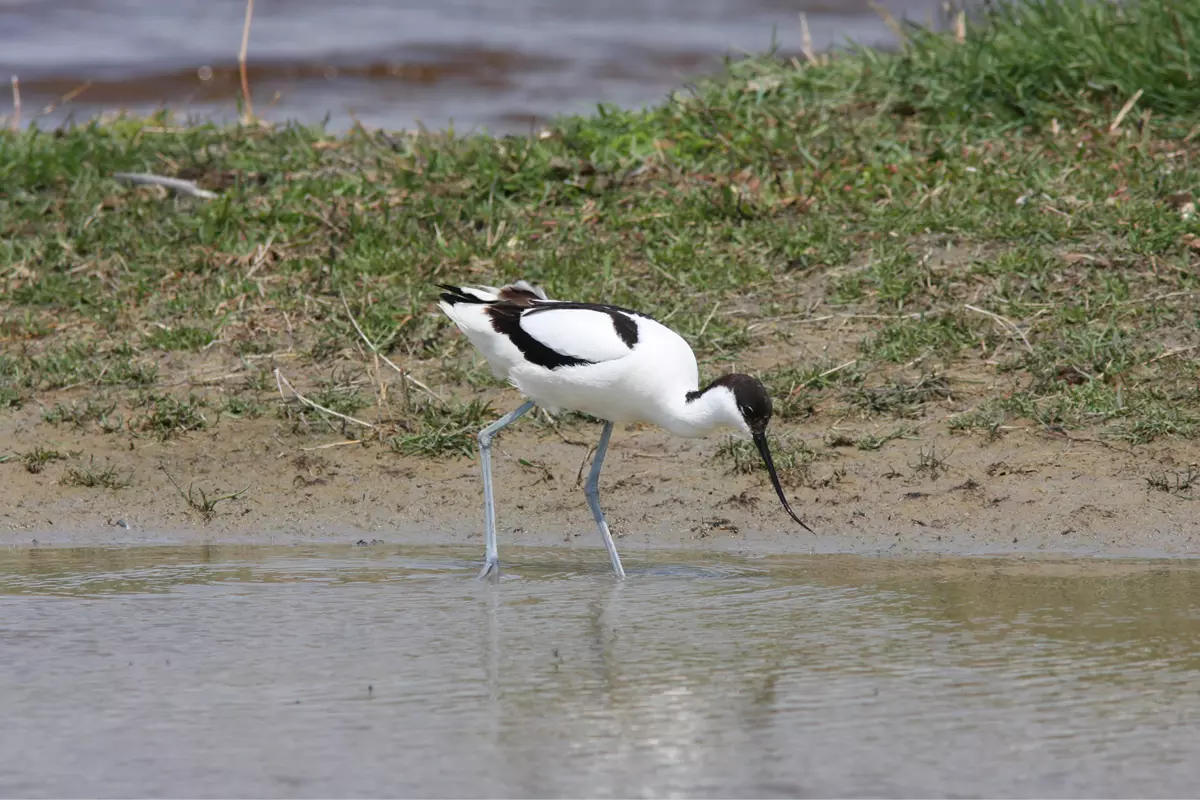
The National Park Authority offers a range of information and educational services to those interested in the bird life of the area. In addition to guided tours, these include an exhibition in the National Park Centre, special maps and the "Bird-List Neusiedler See" app, which provides information on all bird species occurring in the region, indicates the best places for observation and also offers the possibility to save personal observations and share them with others.
Around 50 kilometres north of Lake Constance, in the district of Biberach, lies Southwest Germany's largest moor, the Federseemoor. It is not only home to significant breeding populations of interesting species, but is also an important resting area for migratory birds. Large-scale renaturation and targeted habitat management by the State Nature Conservation and NABU have improved the conditions for many animal and plant species. The Federseeried is a European reserve and designated as an FFH and European bird sanctuary.
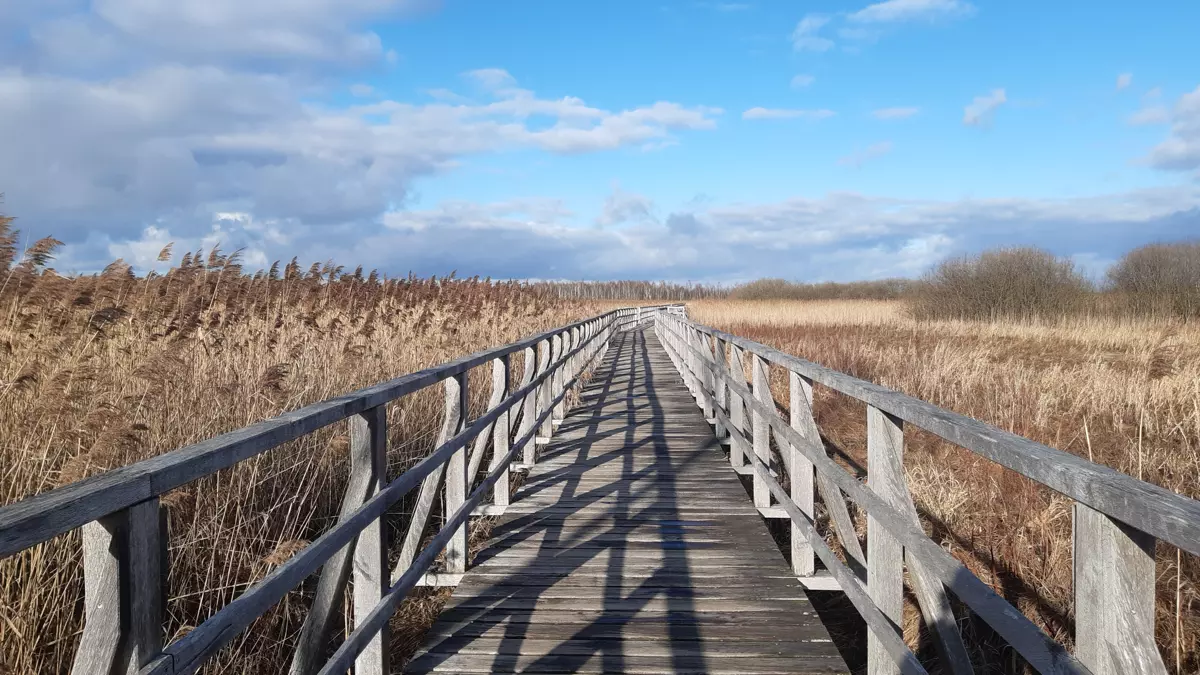
It is most beautiful in the quiet morning hours on the Federseesteg, which leads through the middle of the wide reed belt to a platform in the lake. Only a few steps behind the Federsee car park, the litter meadows begin - and with them the habitats of meadow nesting birds such as the Grasshopper Warbler and Skylark. Not far from the footbridge, you can sometimes hear the song of the whinchat. The animals have become accustomed to the people on the boardwalk and show low flight distances - ideal for birdwatchers.
At any time of year there are worthwhile photo motifs to be found in the Federseemoor, which can be captured from the public paths, footbridges and viewing facilities. Be it an encounter with the agile bearded tits in autumn or catching the flight of the hen harriers from their roosts during a morning perch on the pulpit in the southern Federseeried, accompanied by screeching common terns.
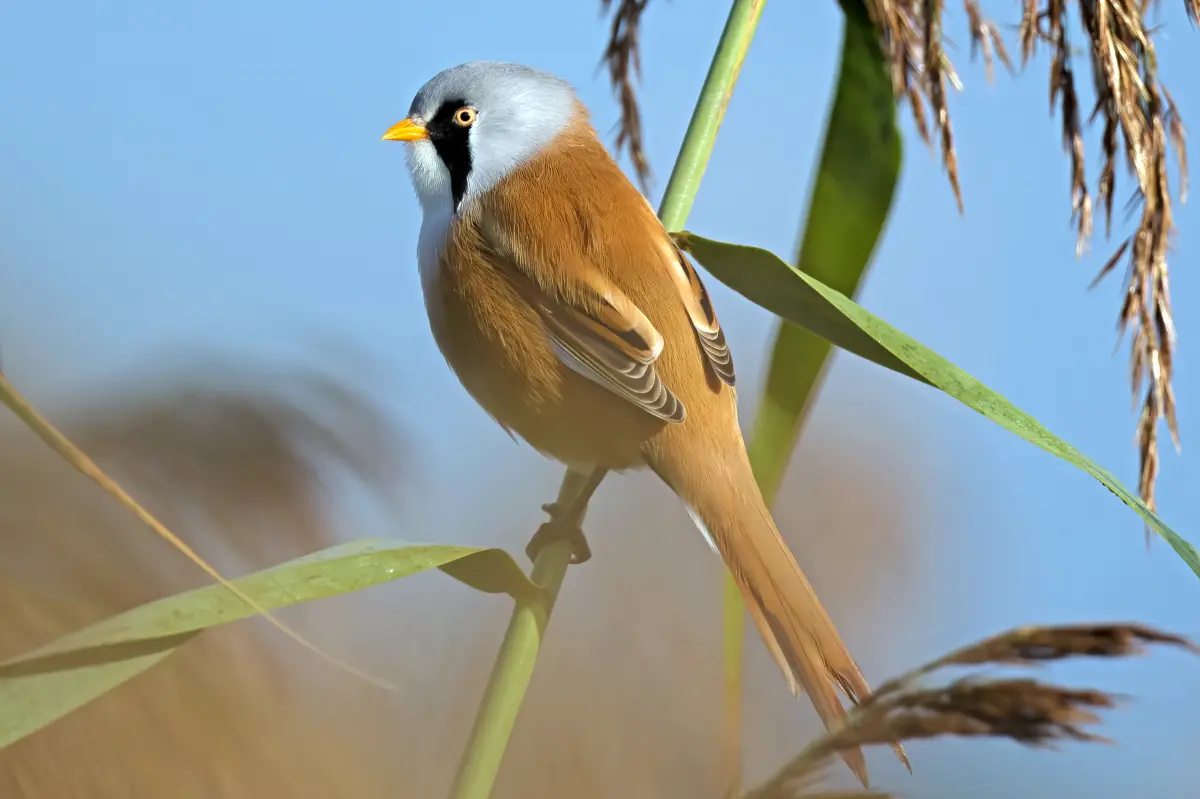
The Hohe Tauern National Park, which stretches across the three Austrian provinces of Salzburg, Tyrol and Carinthia and is home to 15,000 animal species, also has great birding hotspots, often in the form of large wooden towers, from which many a spectacular rarity can be discovered overlooking scree, steep rock faces, alpine pastures and woodlands.
In the wild and romantic Krumltal valley, where Austria's first successful bearded vulture brood was recorded in 2010 after the reintroduction there, there is the "Kings of the Skies" theme trail, where information boards provide interesting facts about these fascinating birds of prey. In addition to bearded vultures, other spectacular species such as golden eagles, griffon vultures, crag martins or the rare wallcreeper can be observed with a bit of luck and binoculars.
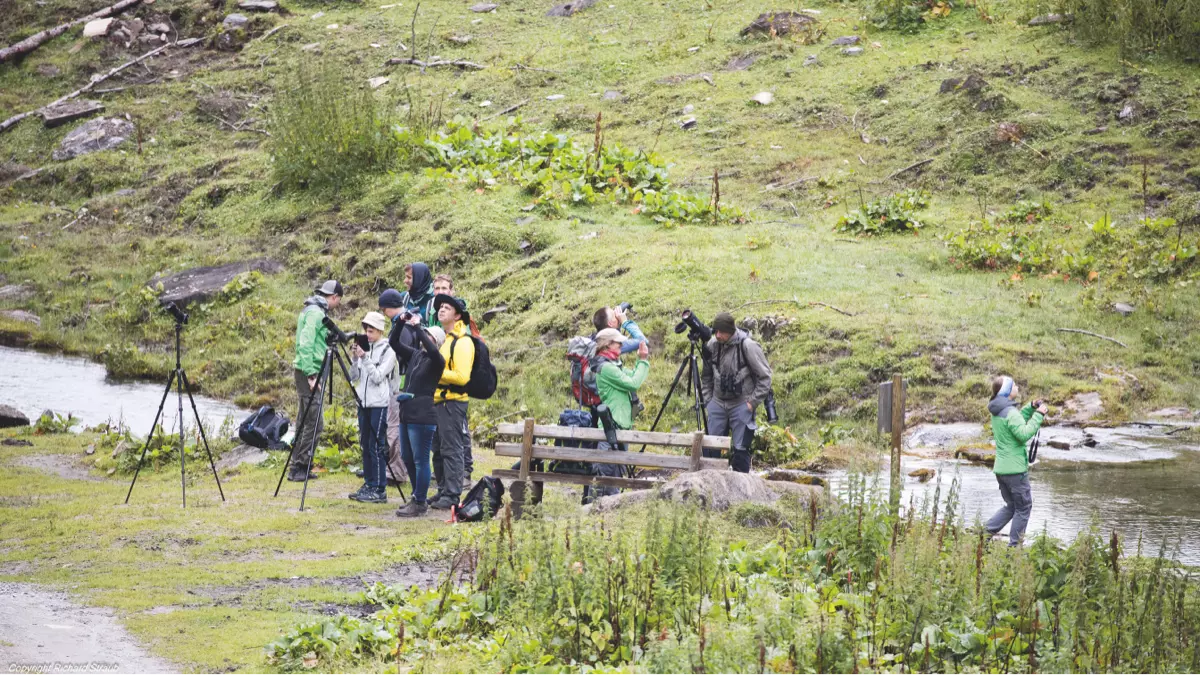
At times of bird migration, numerous little-known bird species can be discovered and identified, especially in northern German regions. The NABU Nature Centre Katinger Watt, located in the EU bird sanctuary of the same name, regularly offers public guided tours with a focus on ornithology.
In addition, observation towers and vantage points provide views of the breeding birdlife, including meadow pipit, sandpiper and Kentish plover, oystercatcher, black-tailed godwit or gadwall, spoonbill and garganey.
Among the resting birds, there are numerous species of Arctic limousines during spring and autumn migration, and rarities such as the marsh sandpiper, grey-breasted sandpiper, pond sandpiper and white-winged tern regularly appear in the area.
Book tip
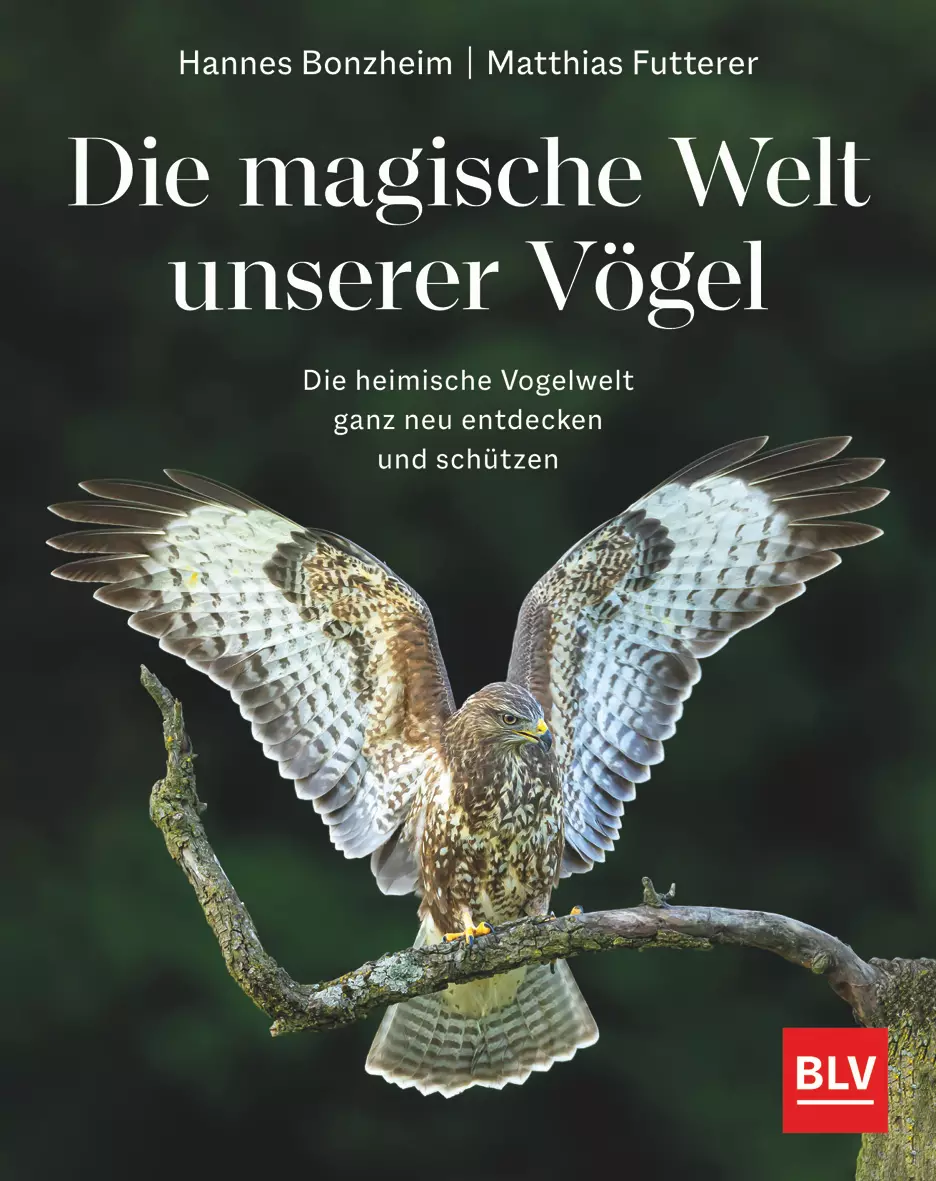
Hannes Bonzheim
Matthias Futterer
Die magische Welt unserer Vögel (The Magical World of Our Birds)
Die heimische Vogelwelt ganz neu entdecken und schützen (Discover and protect the local birdlife in a whole new way)
Length: 384 pages with approx. 450 photos
Format: 21 cm x 26.5 cm, cardboard binding
Price: 42,00 € (DE) / 43,90 € (AT) / 55,50 SFr (CH)
ISBN: 978-3-96747-079-6
Publication date: December 2022
The young bird enthusiast and ICARUS ambassador of the Max Planck Society Hannes Bonzheim and nature photographer Matthias Futterer inspire with amazing scientific facts and unique photos that show our birds in a whole new light.
Fascinating photos, interesting bird descriptions, exciting stories, inspiring projects and amazing facts - with this diversely designed illustrated book, it is a pleasure to dive into the magnificent world of our native birds. Here, personal anecdotes are combined with scientific findings. You get practical tips and recommendations that draw you out into nature and encourage you to go birdwatching. In Die magische Welt unserer Vögel (The Magical World of Our Birds), the two bird experts and photographers Hannes Bonzheim and Matthias Futterer present over 100 bird species that can be observed in Germany, such as the expressive Little Owl or the colourful Bee-eater.
About the author:
Hannes Bonzheim is 18 years old and already a fantastic nature photographer and bird expert. The conservationist and ICARUS ambassador of the Max Planck Institute for Behavioural Biology won his first nature photography competition in 2019.
Matthias Futterer is an amateur photographer. Many of his fascinating photos are taken at the Kaiserstuhl. He particularly enjoys taking pictures of birds and insects. With the latter, he prefers macro photography to make the smallest details clearly visible.
Text: Peter Grett
Images:
Lead story: Stefan Leitner
Image 1 Bee-eater: Hannes Bonzheim
Image 2 Wiedehopfe: Hannes Bonzheim
Image 3 Woman with girl: Ramona Waldner
Image 4 Bearded vulture: cNPHT Rieder
Image 5 Avocet: Frank Wengerodt
Image 6 Federseesteg: NABU-Katrin Fritzsch
Image 7 Bearded Tit: NABU-Klaus Mendla
Image 8 Ranger tour: Stefan Leitner
Image 9 Observation stand inside: Monika Povel
Image 10. Uferschnepfe: Emil Tewald

